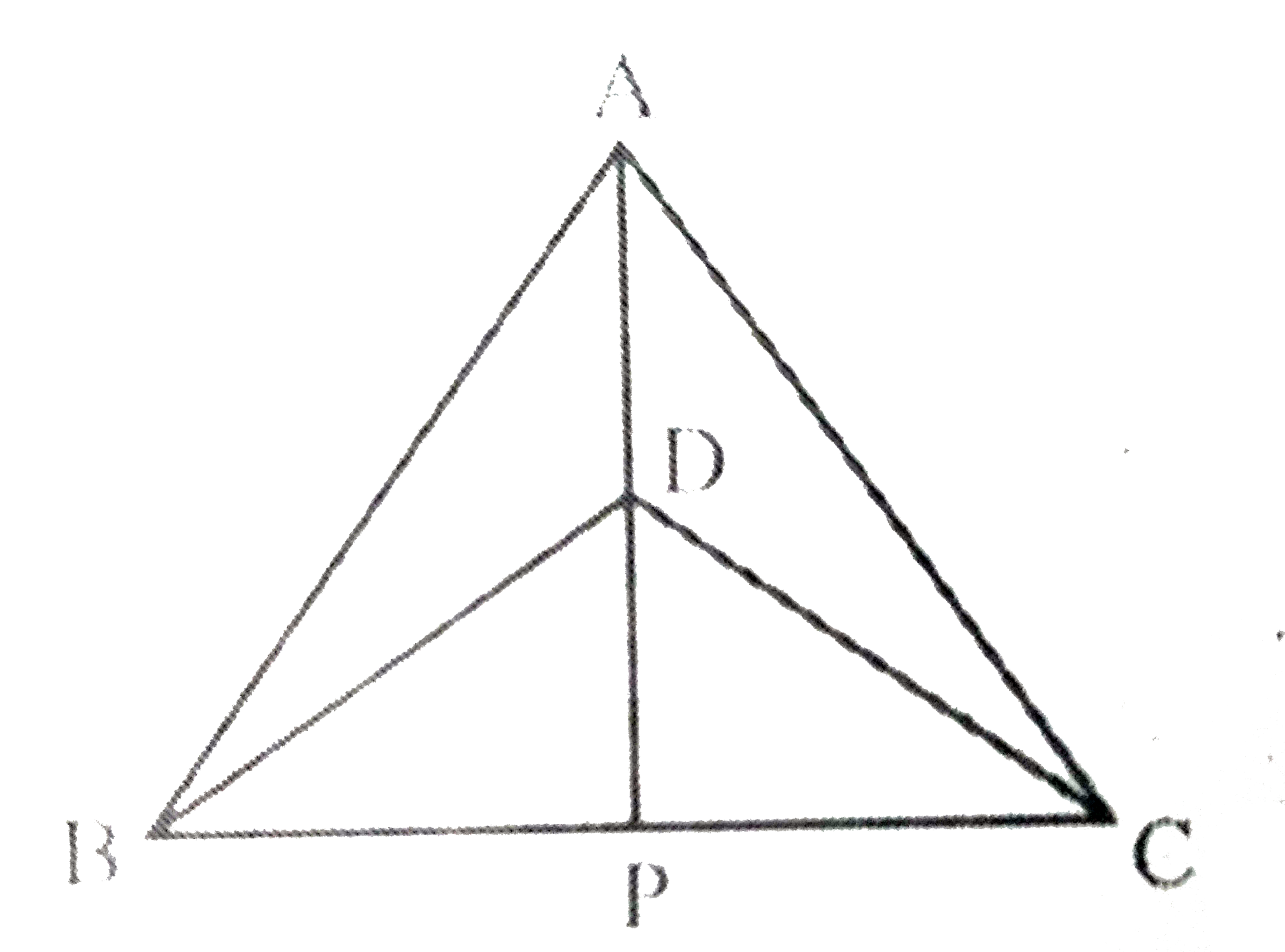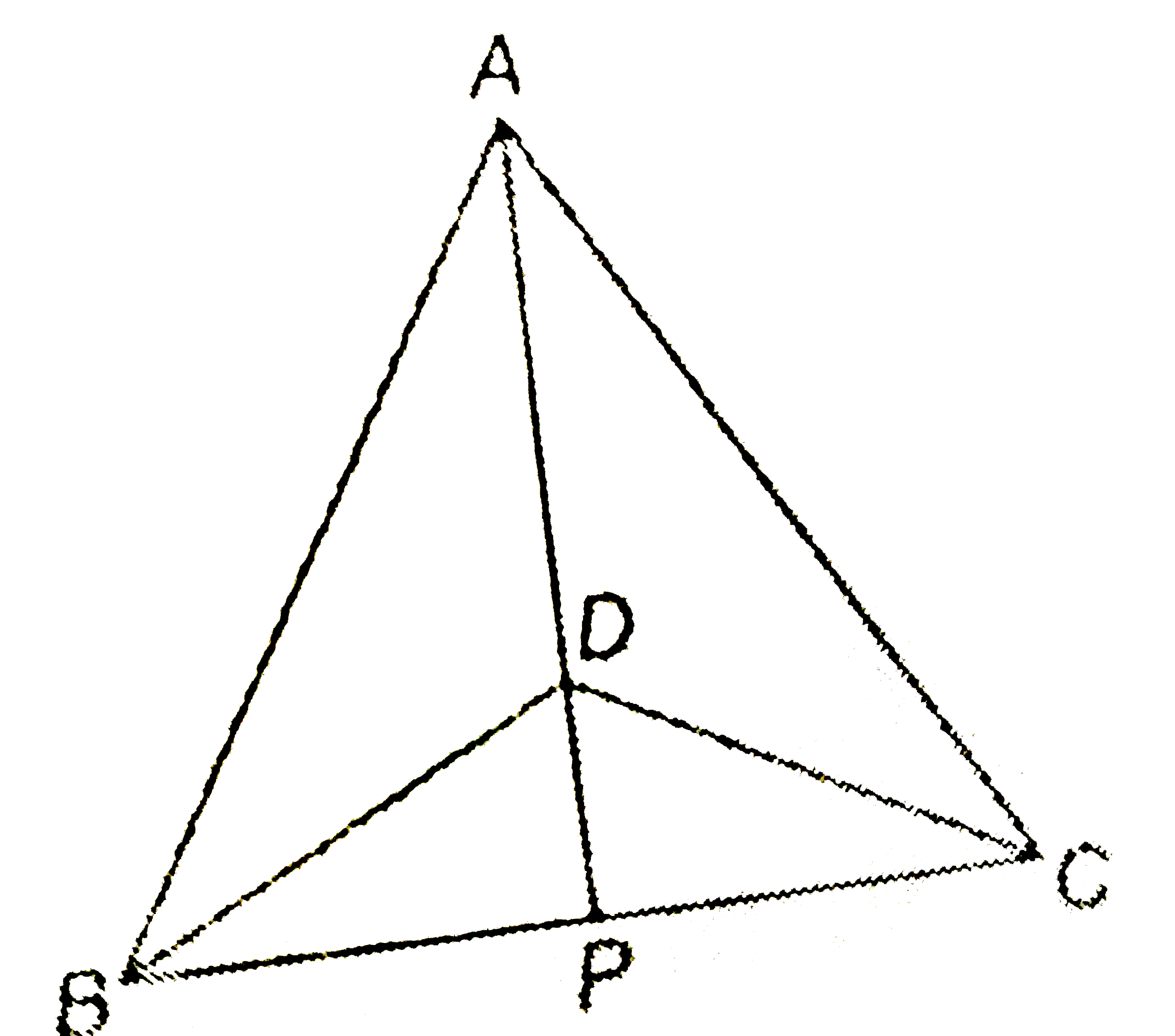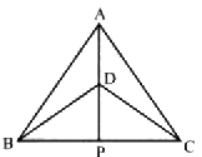ΔABCand ΔDBCare two isosceles triangles on the same base BC and vertices A and D are on the same side of BC (see Fig. 7.39). If AD is extended to intersect BC at P, show that (i) ΔABD≅ΔACD
(ii) ΔABP≅ΔACP
(iii) AP bisects ∠A as well as ∠D
(iv) AP is the perpendicular bisector of BC


(i) In ΔABD and ΔACD,
AB=AC (Equal sides of isosceles ΔABC)
BD=CD (Equal sides of isosceles ΔDBC)
AD=AD (Common)
ΔABD≅ΔACD (By SSS congruence rule)
By CPCT, we get
∠BAD=∠CAD
∠BAP=∠CAP…. (1)
∠ADB=∠ADC…. (2)
(ii) In ΔABP and ΔACP,
AB=AC (Given)
∠BAP=∠CAP [From equation (1)]
AP=AP (Common)
∴ ΔABP≅ΔACP (By SAS congruence rule)
∴BP=CP (By CPCT)…. (3)
(iii) From Equation (1) we know that ∠BAP = ∠CAP
Hence, AP is the angle bisector of ∠A.
From equation (2), we know that ∠ADB=∠ADC
⇒180∘−∠ADB=180∘−∠ADC
⇒∠BDP=∠CDP.... (4)
Hence, AP is the bisector of ∠D.
(iv) In ΔBDP and ΔCDP,
DP=DP (Common side)
∠BDP=∠CDP (Using (4))
DB=DC (Equal sides of isosceles ΔDBC)
∴ΔBDP≅ΔCDP (By SAS conguence rule)
∴ ∠BPD=∠CPD (By CPCT)…. (5)
∠BPD+∠CPD=180∘ (Linear pair angles)
∠BPD+∠BPD=180∘ [From Equation (5)]
∠BPD=90∘… (6)
Also, BP=CP [From equation (3)]
Similar Questions
ΔABCandΔDBC are two isosceles triangles on the same base BC and vertices A and D are on the same side of BC (see figure). If AD is extended to BP intersect BC at P, show that

ΔABP≅ΔACPView SolutionΔABCandΔDBC are two isosceles triangles on the same base BC and vertices A and D are on the same side of BC (see figure). If AD is extended to BP intersect BC at P, show that

ΔABD≅ΔACDView SolutionΔABC and ΔDBC are two isosceles triangles on the same base BC and vertices A and D are on the same side of BC. If AD is extended to intersect BC at E show that
View SolutionΔABC and ΔDBC are two isosceles triangles on the same base BC and vertices A and D are on the same side of BC (see figure). If AD is extended to intersect BC at P, show that :
(i) ΔABD≅ΔACD
(ii) ΔABP≅ΔACP
(iii) AP bisects ∠A as well as ∠D
(iv) AP is the perpendicular bisector of BC.
 View Solution
View SolutionΔABCandΔDBC are two isosceles triangles on the same base BC and vertices A and D are on the same side of BC (see figure). If AD is extended to BP intersect BC at P, show that

AP bisects ∠A as well as ∠D.View SolutionΔABCandΔDBC are two isosceles triangles on the same base BC and vertices A and D are on the same side of BC. If AD is extended to intersect BC at E, show that
(i) ΔABD≅ΔACD
(ii) ΔABE≅ΔACE
(iii) AE bisects ∠A as well as ∠D
(iv) AE is the perpendicualr bisector of BC.
 View Solution
View SolutionABC and DBC are two isosceles triangles on the same bas BC and vertices A and D are on the same side of BC . If AD is extended to intersect BC at P, show that ABD ≅ACD (ii) ABP ≅ACP
View Solution△ABC and △DBC are two isosceles triangles on the same base BC and vertices A and D are on the same side of BC. If AD is extended to intersect BC at P, show that (i) △ABD≅△ACD (ii) △ABP≅△ACP (iii) AP bisects ∠A as well as △D. (iv) AP is the perpendicular bisector of BC.
View SolutionABC and DBC are two isosceles triangles on the same base BC and vertices A and D are on the same side of BC . If AD is extended to intersect BC at P, show that ABD≅ACD (ii) ABP≅ACP AP bisects ∠A as well as ∠D AP is perpendicular bisector of BC.
 View Solution
View SolutionABC and DBC are two isosceles triangles on the same bas BC and vertices A and D are on the same side of BC . If AD is extended to intersect BC at P, show that AP bisects \ ∠A as well as ∠D AP is the perpendicular bisector of BC
View Solution

